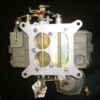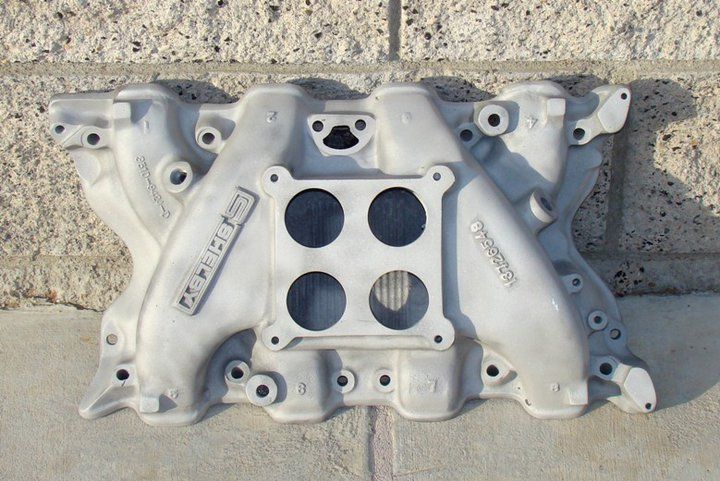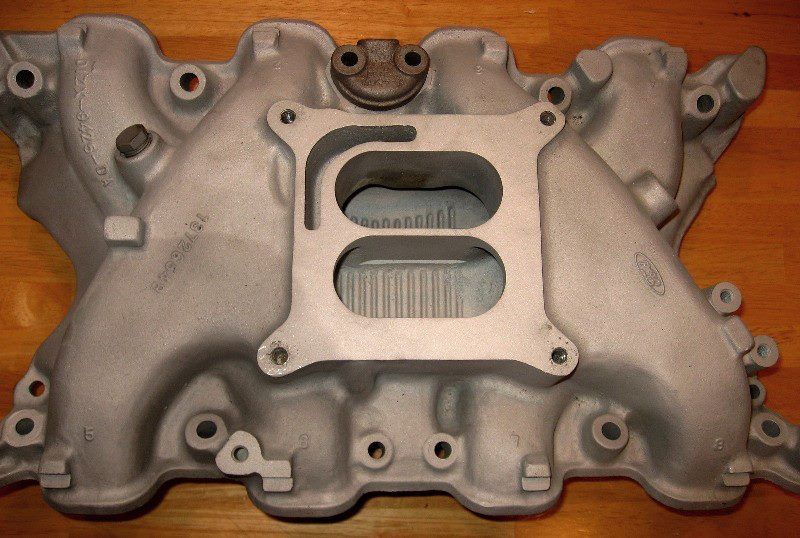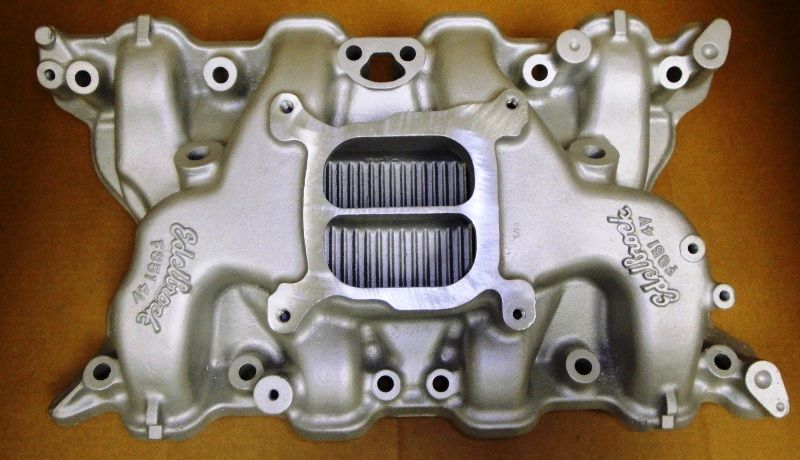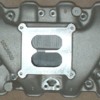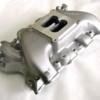While you guys debate over how many angels can sit on the head of a pin, the simple answer is that just about every popular engine design, i.e., I don't think the International Harvester 350 v8 qualifies, has manifolds built for them both ways.
It all depends on the design of the manifold was intended to do.
Back in the days when electricity was a brand new thing, companies like Edelbrock and Offenhauser built manifolds to market to the masses of the budding aftermarket industry to give you A LITTLE more power, less weight and pizaz then the factory manifolds, WITH NO OTHER CHANGES TO THE ENGINE.
Here is a picture of the Offe 360 for the Cleveland. It certainly has a notch.
It should look at least vaguely familiar to SOME of you in this debate, right?

There are a set of instructions that come with that manifold from Ollie Morris himself (Goggle him if you don't know who he is, I do, you should) that say, "don't touch it". It is what makes his design work.
The fact of the matter is that there are absolutely enough manifolds around to support both sides of the argument.
To me, the debate is a waste of time. The notch is a tuning device in the sense that absolutely every other factor in induction on a naturally aspirated engine is.
You are balancing idle quality, throttle tip in, low, mid and high rpm power for the best combination. "Best" being determined by the manufacturer, NOT YOU.
Edelbrock is notorious for building disappointing manifolds in the past. Disappointing, at least to me. I think that is simply because their intended market is not one that I fall into.
I am not putting their manifold on a big heavy car with an automatic transmission and 3.00:1 gears. To me, that is what their manifolds are tuned to. At least until recently.
In this day and age when seemingly everyone has a chassis dyno, none the less a CNC laser cutter, a TIG welder, a MIG welder and God knows maybe a former Soviet block nuclear device in the basement, everyone is a critic.
Just like selecting a camshaft, a carburetor, header tube size and length, these items are all intended to tune YOUR PERSONAL set up as best you can.
To me, the last thing that should be modified on a notched intake manifold is the notch itself. The problem is, once you went too big, the manifold is junk. Aluminum scrap here is $.23 a pound. That doesn't get your purchase price back.
Personally, if I was going to mess with that divider, I'd leave the Shelby script manifold alone and grind on the Blue Thunder.
Long before Dan Jones started his own dyno project, that manifold was played with by altering that divider.
Unless you are a serious race team looking to squeeze the last drop of horsepower out of a 40 some odd year design to compete now, what's the point and what's the difference? A 40 year old design competitive now would just be pure luck?
There is absolutely enough current information, i.e. DYNO DOCUMENTATION, by Dan Jones to indicate the differences with THAT manifold and the advantages or disadvantages of each configuration.
Exactly who is responsible for the original design of the ORIGINAL "SHELBY" manifold that Blue Thunder re-introduced, to my knowledge, has not been credited.
It DOES NOT appear to come out of the Ford, Kar Kraft, Holman-Moody or Bud Moore camp. It was thought to be cutting edge in 1970 when it was designed but that was with 1970 expectations for the 351C, i.e., improving an advertised 300 hp Mach I production engine in the Mustang and Torino. That's about what you got from it. Another 10 or 15 hp.
I personally doubt it was ever concieved of as capable of 500hp and 500 ft-lbs out of the 351 configuration?
Unfortunately it arrived at the end of the Ford's direct involvement in racing and their funding performance/racing parts program because of the increasing involvement of the auto industry in complying with the new California and US emissions standards, and their racing success at Le Mans in beating Ferrari in '66 & '67, which was all Henry really wanted to begin with. It probably could have used more development, BUT IT IS WHAT IT IS AND THAT BATTLE IS LONG OVER.
Detomaso himself was a victim of this Ford withdrawal leaving him to fund his own 351c engine racing development for the Pantera, which apparently he was not able to do very well without the American/Ford involvement.
I will point out also that AT Francis, aka Blue Thunder, has the reputation for "improving" original port designs and leave them original looking on the exterior.
I would expect the BT to be just a little bit different, a little bit "better" than the originals?

This is like debating the US Civil War and who should have won? The war is LONG OVER. Don't fight it again. Get over it and live with the outcome.
Yikes. You guys are like 9th graders that won't give up the argument you started in home room?



